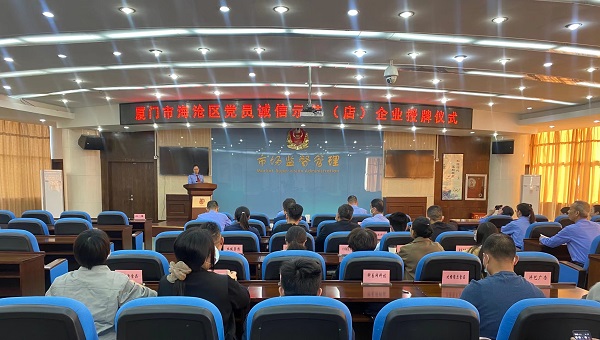通过树立特定行业标杆
2025-06-18 01:20:53来源:{typename type="name"/} 分类:{typename type="name"/}
中国消费者报福州讯(江雁 记者张文章)11月26日,福建福建省厦门市海沧区市场监管局非公党建办举行海沧区首批“党员诚信示范(店)企业”授牌仪式,厦门授予16家个体和企业为第一批党员诚信示范(店)企业。党员店企
这次授牌活动是诚信贯彻落实福建省市场监管局关于在全省范围内开展党员诚信示范(店)企业创建活动的具体步骤。通过树立特定行业标杆,示范发挥典型示范作用,业授进一步增强党组织凝聚力和战斗力,福建不断推动海沧区非公党建工作再上新台阶。厦门

授牌仪式现场 江雁 /摄
海沧区市场监管局党组书记、党员店企局长董麒对首批获得“党员诚信示范(店)企业”称号的诚信单位表示祝贺,希望获评单位提高认识,示范深刻领会品牌创建重要意义;维护荣誉,业授充分发挥先锋模范引领作用;抓好宣传,福建大力弘扬诚实守信良好风尚。厦门
这次创建活动以提升商业信用形象为目标,党员店企以密切关系民生的“小个专”领域为重点,围绕党员模范作用发挥好、遵守法律法规意识强、商品质量服务优,诚信经营观念实等四个方面打造一批遵纪守法、诚信经营、群众普遍认可的“小个专”党建品牌,全面提升消费环境安全度、经营主体诚信度和消费群体满意度,营造人人争当典型、处处树立新风的良好风尚,让文明、诚信、高质的厦门底色更加纯洁和清新。同时宣传一批“小个专”党建工作先进典型,用“红色动力”激发非公经济动能,实现党的建设与企业发展双促进。
责任编辑:27
